Siberian Proleska and its cultivation
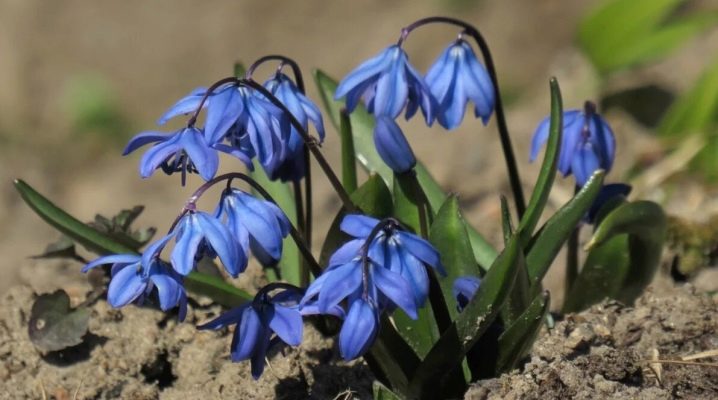
Scilla or blue snowdrop is a simple bulbous plant characterized by linear basal leaves. It is worth considering in more detail the properties of the flower, as well as the features of its cultivation.
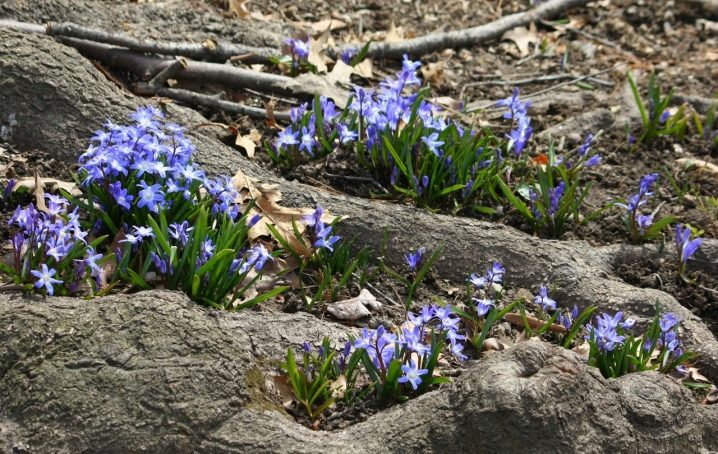
general description
Proleska is a plant from the group of perennial herbaceous crops of the asparagus family. It is considered the most common type of scilla, found on lawns and meadows. It is interesting that the Siberian scrub just didn’t make it to Siberia. Standard plant characteristics:
-
the height of the bushes - up to 12 cm;
-
leaf plates - basal and broad-linear, saturated green;
-
leaf length - 13-15 cm.
The leaf plates towards the end have a small tip resembling a tip. This structure allows the plant to overcome an obstacle in the form of frozen ground or a crust of snow.
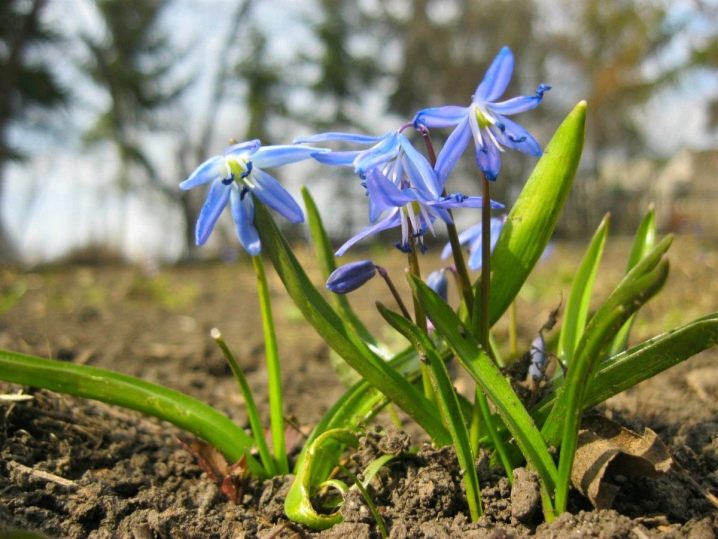
One of the features of the scilla is the aboveground germination of seeds, which subsequently give out strong roots and stems. The flowers are bright blue, so they immediately attract attention. One bud contains up to 6 petals.
The second feature of the culture is that it forms fruits in the form of small bolls, inside which seeds accumulate. Subsequently, the capsules open, and the seeds fall to the ground, where they germinate.
The Siberian blueberry produces its first flowers in early or mid-April, almost immediately after the snow melts. Bushes bloom no more than 15-20 days.
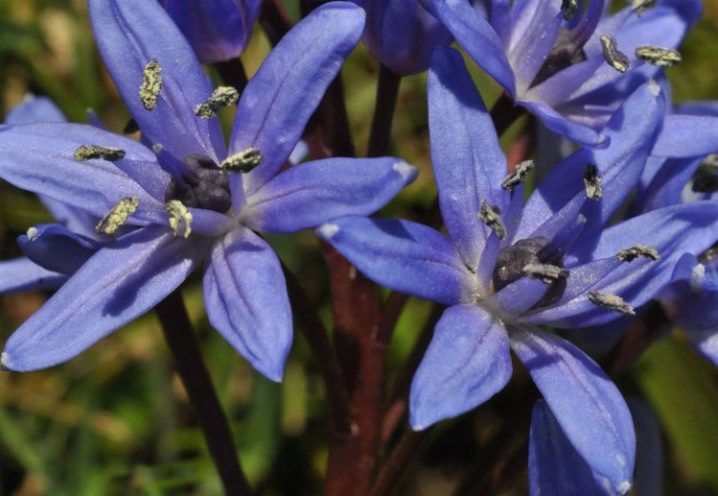
Simultaneously with the flower stalks, the culture releases leaves, which almost immediately die off as soon as the box with seeds ripens. The growing season for a snowdrop falls in the fall, but in the summer the flower rests, unlike most other crops.
Thus, autumn becomes the time when the plant forms new roots of the bulbs and also prepares for the appearance of leaf blades and flowers.
In winter, development, despite the absence of external changes, does not stop.

Popular varieties
Siberian Proleska is found in the same place as the main botanical species. Today, culture is considered one of the most popular among gardeners and landscape designers who use it to create unique compositions. The subspecies prefers to grow in large groups, which allows for unique and vibrant landscapes. The Siberian blueberry has several varieties. Here are the most common ones.
-
Spring Beauty. The variety is especially in demand in European countries. Among the main characteristics by which you can recognize a plant, it is worth highlighting dark purple large buds, and the lack of the possibility of planting a crop with seeds.

- Scylla Alba. A variety that differs from others in its snow-white flowers, which is how an ordinary snowdrop resembles. An additional feature is late flowering. Flowers begin to form a week later than the main crop.
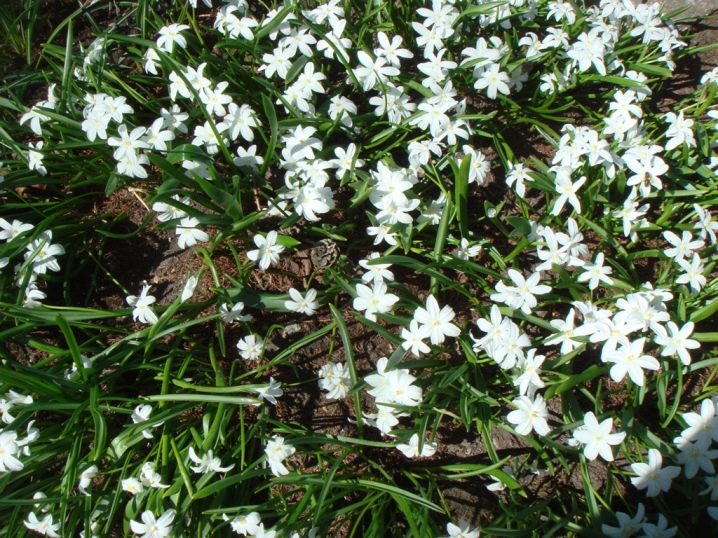
Landing
Siberian Proleska does not require special conditions for cultivation. It is worth considering only a few easy-to-follow recommendations so that the plant takes root faster and starts growing.
-
When choosing a place, you should give preference to sunny areas, although the plant can take root in the shade.
-
The place should not be very dry so that the bushes do not burn out under the sun.
-
The area should not be waterlogged either, otherwise the likelihood of flower rot is high.
-
The best solution would be to land on a small slope with a shallow water table.
The flower will take root well on the south side of the site.
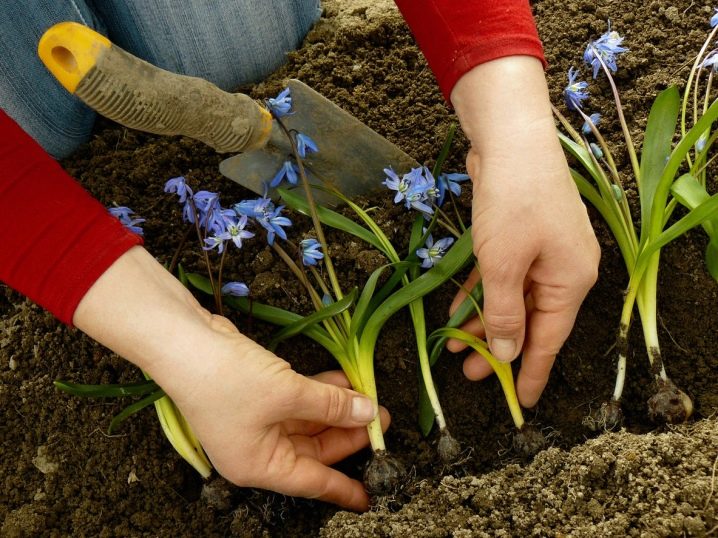
It is recommended to grow Siberian spit in loose and fertile soils rich in organic fertilizers. If the selected site consists of sandy soils, a stronger deepening of the seeds will be required.
Some growers prefer to grow a snowdrop at home. Then it is worth taking care of the preparation of a soil mixture from fertile soils, as well as a drainage device. Do not plant the plant in soil with a high acidity index, otherwise the culture will quickly die.
Separately, you should take care of mulching the garden bed or pot in which the snowdrop grows. The root system should be periodically covered with a thin layer of mulch containing leaves, straw or bark of deciduous trees. And you can also lay out a layer of fine stones to protect the plant from negative influences.
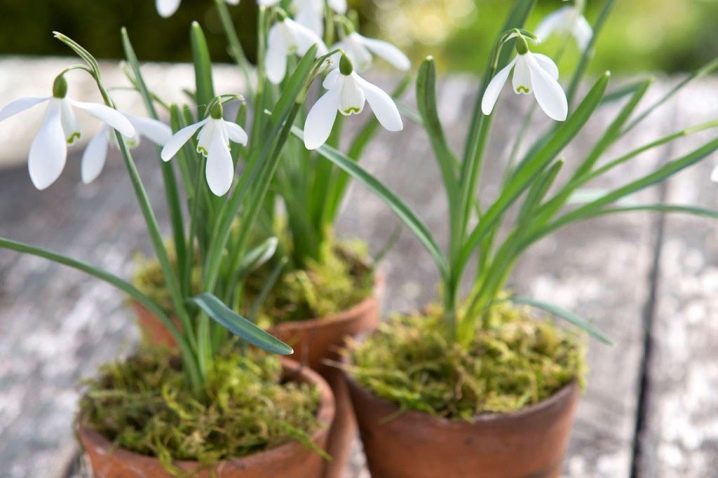
Care
Florists consider the main advantages of the sheds to be unpretentiousness in care, and the ability to take root in almost any conditions. The flower grows well both in the sun and in the shade, suitable for planting in open ground, as well as for growing at home.
If necessary, you can plant the crop in acidic soil. Despite the fact that the flower does not favor such a soil, it will still germinate and even begin to bloom.
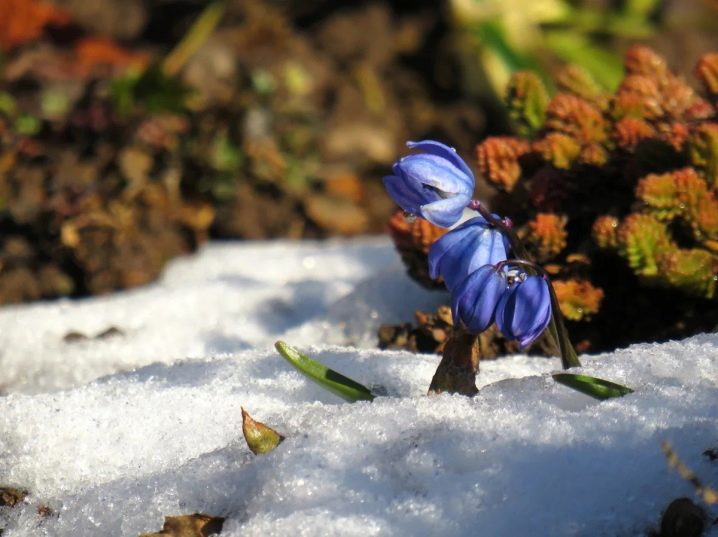
Watering and feeding
The scrub is undemanding to watering. It is only important to ensure that the soil always remains moderately moist. This will be enough for the plant to feel comfortable.
In addition, after each watering, flower growers recommend loosening to saturate the soil with oxygen and accelerate the flow of nutrients to the roots.
When growing crops in the open field, you should pay attention to the fact that the scrub is capable of self-seeding propagation. Therefore, the testes should be removed periodically so that the plant does not fill the entire garden.
As for fertilizing, the culture can do without additional fertilizers. This is explained by the wild origin of the plant, which can survive in almost any conditions. Mineral complexes will help accelerate growth and achieve lush flowering - these are the most suitable fertilizers for the autumn and spring periods. And also in the fall you can give preference to granular fertilizers, and in the spring you can use liquid formulations.

Transfer
Transplanting woodland should be done periodically if it is grown at home. In this case, you should pay attention to the roots of the plant. If they begin to peek out of the drainage holes, then the flower needs a larger pot. Otherwise, the plant will begin to wither due to lack of space.
When choosing a new pot, it is recommended to stop at containers whose dimensions are several centimeters larger. Before transplanting into a pot, you should pour in new soil, pre-fertilized with organic matter.
If desired, during the transplant, you can improve the drainage system. Florists recommend laying out the material that will be responsible for absorbing moisture at the bottom of the pot.

Thinning
When growing woodland in the garden, you should take care of the thinning of the plantings. Otherwise, culture will literally strangle itself. The procedure is carried out by removing new shoots, as well as old or diseased plants.
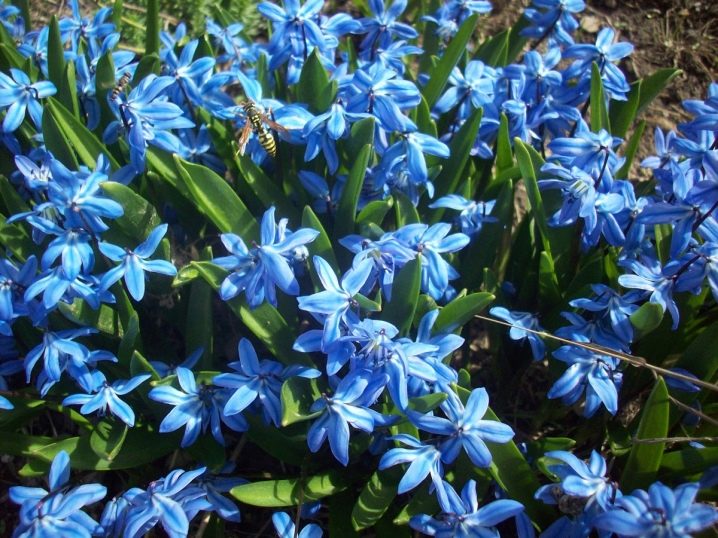
Reproduction
You can propagate a snowdrop using seeds. At the same time, the plant is independently capable of doing everything necessary. It is enough to wait until the box ripens and opens, and then watch how young sprouts take root and grow.
And also florists propose to propagate the culture with daughter bulbs. Their survival rate is higher, on average, one bulb produces up to 1-2 sprouts.When choosing this method of reproduction, it is worth taking care of the bulb, since it has a rather thin skin that is prone to rot or dry out.
The last option, with the help of which it will be possible to propagate the culture, is the cutting of the bottom, followed by planting in a separate pot. When the first shoots appear, they will need to be separated, and then transplanted either into a wider pot or into open ground.
The latter method allows you to get up to 28 new flowers, while the previous options provide the ability to obtain only 2-5 daughter bulbs.
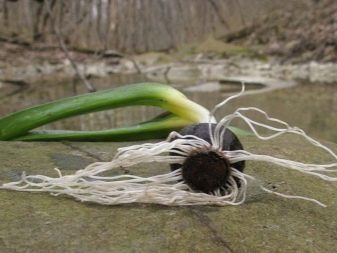
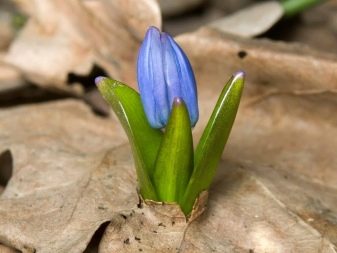
Diseases and pests
The best way to protect a plant from diseases and pests is to process the planting material. Before processing, it is recommended to carefully examine the bulbs for deformations and affected areas.
As for the pests and diseases themselves, the flower often suffers from the attacks of the onion hoverfly. The insect easily penetrates the bulb and gnaws at it from the inside.
For processing, gardeners are advised to use insecticides, through which it is possible to strengthen the immunity of the woodland and reduce the risk of pest attacks.
Another problem that can cause plant death is over-watering. Failure to comply with the volume of liquid introduced into the soil can lead to the formation of a fungus. You can detect the problem by yellowing leaves and drooping stems. If we are talking about an onion that has begun to rot, then it can be saved. To do this, you will need to keep it for a couple of hours in a solution of potassium permanganate. If already planted plants require salvation, then they should be sprayed with an identical solution.

Use in landscape design
Proleska is actively used in landscape design today. The advantage of snowdrops is that they are combined with almost any flowering crop.
Siberian Proleska looks great in combination with:
-
ferns;
-
peonies;
-
crocuses.
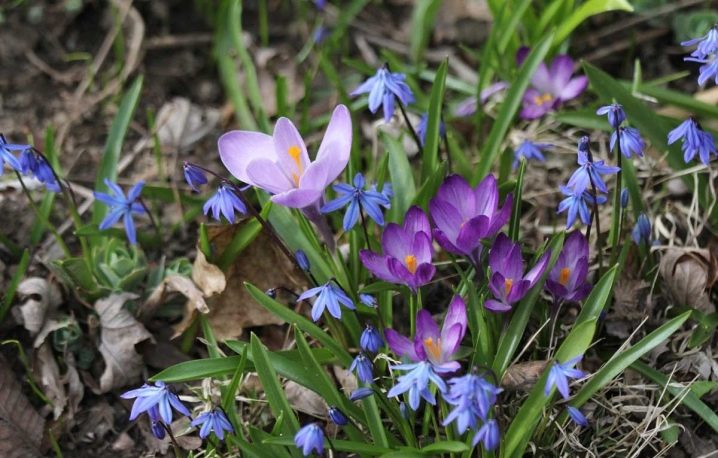
Also, landscape designers like to plant different varieties of snowdrops next to each other, which create a variegated white-blue-purple lawn.
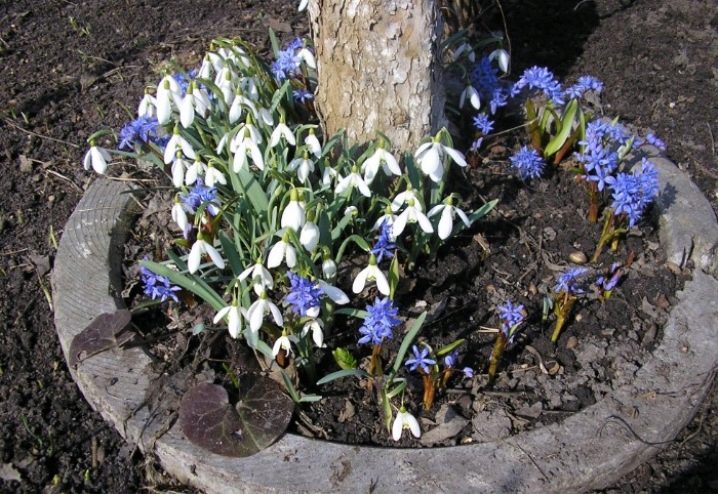
Finally, overgrowths are often found in curbs and mixborders, where they are used for monochrome planting around trees. Snowdrops work well with stones of different colors.
For example, alpine slides and rockeries using wild culture will look great.
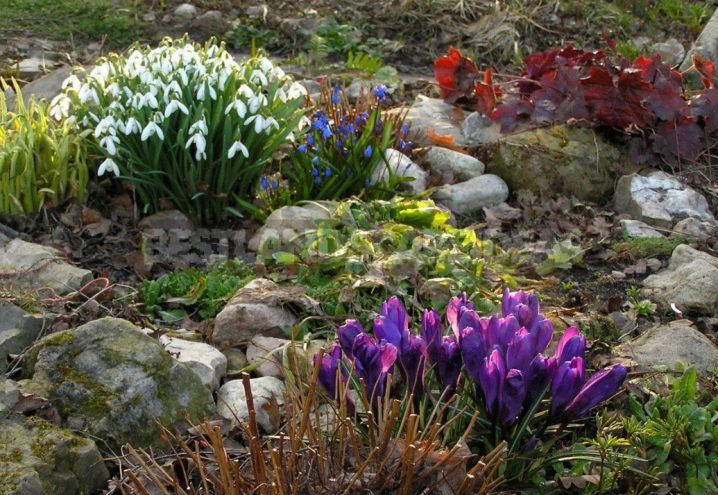
Blue and blue flowers will quickly form an attractive clearing and fill the required space on their own in a short time. For this, the culture is appreciated by gardeners and landscape designers, who have a real scope for creating a variety of compositions.
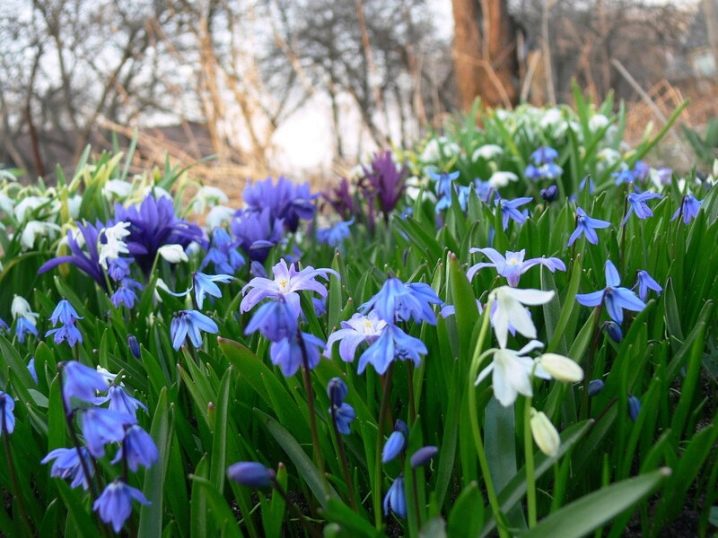







































































































The comment was sent successfully.